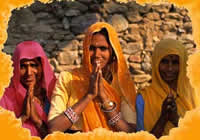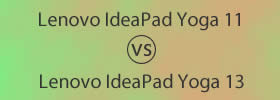Difference between Indian Culture and Western Culture
Key Difference: Indian Culture refers to the customs, traditions, religions and set of rules that are followed in India, while the Western Culture most commonly refers to culture that is followed in America and Europe.
This topic is always debatable and frankly there is never a winner as to which culture is better. Both are different types of culture and customs that are followed in different parts of the world. Indian Culture refers to the customs, traditions, religions and set of rules that are followed in India, while the Western Culture most commonly refers to culture that is followed in America and Europe. Both the cultures differ from each other in the traditional mindset, however, in today’s world both the cultures are coming to a mix. The Indian Culture has been dealing with westernization for a few decades now and the Western Culture has started developing a taste for the exotic Indian food and yoga.

Indian culture can be broken down into two parts; traditional culture and modern culture. Traditional Indian culture is the one that is followed in the rural areas of India, while modern culture is in the urban areas. The traditional culture has been on a continuous decline, with westernization play a huge part in an attempt to bridge the gap between different cultures. The Indian culture is one of the oldest cultures and has been around for several millennia. It encompasses various different cultures that are in the different part of the country.
Indian cultures place a lot of important on society; everything a person does has an effect on society’s perception of the person. Everything from going to a certain school, to dressing a certain way and even getting married, reflects the type of person you are to the society. Major religions part of the Indian culture includes Hinduism, Buddhism, Jainism, Sikhism and even Catholicism. Family is the second most important part of a person; from an early age a child is taught the importance of a family and the part he/she is expected to play in the family. Girls are most commonly taught about cooking, while boys are taught family business.
The Indian cuisine, now popular all over the world, has distinct and rich flavors full of spices. The cuisine varies from region to region; northern, southern, eastern, western and north-eastern. Food from each region can be distinguished by uses of different herbs, spices and cooking techniques. A variety of Indian food has also been influenced by Persians and Mughals. India is also popular for its desserts, known as mithai.
Marriages also play an important part in a person’s life. Arrange marriages still play a huge part in rural India, where families pick out a proper bride and groom for the children to marry with their children’s permission. Love marriages are gaining popularity in India specifically among urban areas. Since a major importance is placed on family, Indian cultures suggest living in joint families, where parents, male children, children’s spouses and grandchildren, all reside in the same house. However, nuclear families have started receiving more importance in urban families.
Clothing that is considered appropriate for women according to Indian culture, includes salwar-kameez, chudidar, saris and clothes that are not too revealing or tight in fitting. India is still a male-driven society and gender equality is something that is still being fought for by women in many rural places in India, where women are still considered lesser compared to men. This is changing, are more women are fighting for their rights to be considered equal in society. Indian culture is also popular for its various different colorful festivals that take place throughout the year.
 Western Culture received its start from the Ancient Greece and Ancient Rome, which spread under the Roman Empire to different parts of the world. It is heavily influenced by Christianity and was stagnant during the Dark Ages. The Renaissance in the 14-17th century is considered to have rebirth the western civilization, which was further promoted by the Scientific Revolution and the Age of Enlightenment. In today’s definition Western culture is most commonly associated with modern societies such as US, UK and Europe.
Western Culture received its start from the Ancient Greece and Ancient Rome, which spread under the Roman Empire to different parts of the world. It is heavily influenced by Christianity and was stagnant during the Dark Ages. The Renaissance in the 14-17th century is considered to have rebirth the western civilization, which was further promoted by the Scientific Revolution and the Age of Enlightenment. In today’s definition Western culture is most commonly associated with modern societies such as US, UK and Europe.
The core importance of Western Cultures are placed on individuals, they most commonly believe in making themselves happy first as an individual rather than trying to placate the society. A person does as he wishes and does all the things that make him/her happy, even if it does not please the society. Major religions that influence the Western culture are Christianity and Judaism. Similar to US being a melting pot for different types of people from different countries, Western culture is also considered as a melting pot of various cultures of different people from different countries. It includes cultures from India, Latin America, Europe, etc.
Cuisine also varies in this culture; however, meat is the core ingredient in almost all meals. Western culture includes cooking styles of Dominican Republic, Puerto Rico, India, Italy, etc. Every person has their own way of cooking a certain dish and ingredients can vary depending on the person. The flavors also vary depending on the ingredients of the dish. Western culture is mainly known for its popular fast foods such as burgers, tacos, hot dogs, pretzels, etc.
Western cultures mainly believe in nuclear families, where once the child reaches a certain age, they move out of their parents’ house into their own home. A child receives independence at the age of 18 and is considered as an adult at that point of age. Depending on the household, a child can either continue living there until marriage or move out at the age of 18. A child is also expected to start working at that age, at least part time along with college.
In this culture, a person also has the freedom to choose who they want to get married to, if they want to get married at all. All of the marriages are consented and love marriages. A person is not forced into a marriage under the consent of the parents. However, in the olden days, mainly for women, fathers used to choose an appropriate suitor.
A number of different festivals are also celebrated in the Western culture. These religions mostly have religions backgrounds such as Christmas (when Jesus Christ was born), Easter (when Christ was resurrected), All Saints’ Day, Valentine’s Day and Thanksgiving Day. Many festivals in Western cultures have lost the true meaning and have only become a commercial holiday, such as Valentine’s Day and Halloween.
In Western cultures, there is no differentiation between men and women as both are considered equal in today’s society. Though prior to this, women were considered lesser to men, it has not been so since the 1970s. Women also have the freedom to choose what they wish to wear; they are not limited to certain boundaries of dressing style. They are also free to wear revealing clothes, though not allowed to be fully nude in public.
Each culture has a set of negative and positive points. They are similar to the two sides of the same coin. No one culture ever surpasses the other culture, as it all depends on perception; to each person either culture could be better than the other one. Many people these days opt to take positive points from both the cultures and live as it suits them.
|
|
Indian Culture |
Western Culture |
|
Definition |
Indian culture is the traditional mindset of people that reside in India. It is the customs, traditions, ceremonies, festivals, religions of India |
Western culture started from the Ancient Greece and Rome, which then spread all over the world under Roman rule. It was then encouraged by the European civilization and now refers to modern way of thinking |
|
Origin |
Indian culture is one of the oldest cultures in the world. The traditions are several millennia old |
Though according to historical records ,western culture began with Ancient Greece and Ancient Rome, it is considered as a modern culture to many people |
|
Religions |
Hinduism, Buddhism, Jainism and Sikhism |
Christianity, Judaism |
|
Cuisine |
Indian food is heavily spiced and is rich in flavor. Major emphasis is put on having lunch |
Basis of food is meat; it is an essential part of every meal. More emphasis is placed on have dinner |
|
Family |
Traditional people usually prefer joint-families, while modern people are now living in nuclear-like families |
Most people believe in nuclear families |
|
Festivals |
Holi, Diwali, Navratri, etc. There a whole lot of festivals that are based on different events in the history; modern festivals are being accepted such as Christmas |
Christmas, Labor Day, Easter, Halloween etc. Also due to it being a melting pot a whole of other festivals are also celebrated |
|
Marriages |
Arranged Marriages are more common, compared to love marriages |
Love marriages are more common |
|
Society |
Society plays an active part in a person’s life. Every decision that a person takes , reflects what the society thinks about it |
Society does not take an active part. People take decisions depending on what they want, not what the society thinks |
|
Gender Equality |
Women are still considered unequal to men though acceptance of westernization is changing this idea |
Women are equal to men in society |
|
Castes |
Still have various castes, where one caste is lesser than the other caste |
No such thing as castes, all people are equal |
|
Clothing |
Clothing should not be revealing or tight |
A person can wear clothing according to what they desire |
|
Music |
Religious, classical, folk, popular, bollywood and pop music |
Is a melting pot and mix of all kinds of music from all over the world; includes rap, hip hop, pop, metal, rock, soft rock, alternate, etc |
|
Hierarchy |
The social hierarchy cannot be challenged. (ex: Boss has final decision) |
Hierarchy can be challenged at any point by anyone |
Image Courtesy: vagobond.com, bumimmusese.blogspot.com









Comments
anshu shrivastava
Thu, 10/15/2015 - 21:52
Sheo Narain Singh
Sun, 09/20/2015 - 12:04
Nagendra prasad
Tue, 09/15/2015 - 10:30
every culture is good :)
nash
Sat, 07/04/2015 - 15:38
Anky Jang
Wed, 08/26/2015 - 13:19
indian culture is best in whole world bcoz we r respect of all others
deep
Thu, 07/02/2015 - 02:03
I am lucky to born in ind. Because it's culture is the best culture of the world.
Vipul prakash
Thu, 05/07/2015 - 14:24
The real or ancient India had nothing to do with the Arabic ideas of art, culture, freedom nudity that we have superimposed falsely as Indian culture. the hard rules may have been needed and more suitable to the less evolved warring criminal desert tribes of that era and time . even progressive citizens of arab countries want out of this old strangle hold. THe sufis of Indian subcontinent and Turkey are more in tune with Indian and western ethos of love for all living beings and nature.
.
Real ancient India was open about respecting the freedom of women to choose own husband or life partner. Sita's Swayam Var is a case in point.
ofcourse there will be differences of evolution. Whn we try to compare the old with todays politically correct ideals, we forget to see what was the state of society and actual situations and growth of that time.
So many outer social mores things will always evolve and change and the real truths and inner freedoms of spiritual freedom will remail the same. the problem comes when we start labelling social conveniences as religion or ultimate truths of Existence.. then the problems of fanaticism we have in mid eastern countries and INdia will surface as we see today.
THe Shiva linga and Tantric Temples.. from Patanjali Yoga to the Mandirs of Khajuraho Konark are indicative of the real freedom or art, glorifying the matter and spirit of male and female - shiva and shakti yin yang - are the real pointers and ideals of that time and not the hypnotised myths that were feeded falsely as Indian culture by occupying foreign rulers espousing thier own cultural agenda labeled as indian culture. its good to repeat and remember they are called "Temples and mandirs " and not ashleelta or houses of obscenity. sometyhing todays mughal hypnotoised hindus, christians, sikhs and buddhists muslims of india cant understand. shows how much we have changed over the years from the real signpost.. by regressing everyday a few feet, over the years we have gone astray of the real definition of sanatan dharma by many thousand miles. just to mention it as a metaphor.
the stories and parables of rishis falling in love and getting married shows a much more liberal and freedom loving cultrure and not the fanatic talibani hinduism being tom tommed by our misguided dals and senas. they seem to be more in the service of arabia than true sanatan freedom of allowing each individiual to experiment and find his own way to his own truth.
getting stuck to any one single ideal or more soon gets the whole pond stinking and unhealhy. akin to a person who says i will always only travel by car or train or only aeroplane bcoz it got me to america. but one has to often pick and leave many modes of transportation to arrive home or at destination. though one can be thankful to the usefulness of each at various phases of life.
THis freedom was the foundation that created myriad mystics and rich integrated circuits path ways of divergent and seemingly opposing thoughts but all pointing to the same moon. From Buddha to Krishna to Mahavir's Sapeksha vaad ( Perhaps the precursor & foundation to the theory of relativity much before Einstein ) - to Guru Nanak to Meera to Kabir to Gorakh to RISHI Vatsayana's Kamasutra to Rishi Durbhasha (who could get very angry and never fasted), to Ashtavakra all had individual expression of the same right to life and freedom to express and experiment.
Today that same kind of Freedom in silicon valley and android and Linux and internet can be a good analogy to show the beauty and richness that flows from freedom to fall and rise, experiment and express and fail and succeed.
.
most of what we know about indian culture is nothing but ji hazoori yes manship highlighting certain ideas that would please the rulers during mughal and british rule or victorian ideas about art culture nudity etc. Christianity and west moved ahead , ironically taking much from yoga and liberal views of ancient rishis and real india of kamasutra... they became more liberal incorporating the heights of individual ancient vedic freedom but sadly India got stuck into so called foreign culture mis labbeled as Indian culture.
IN the first place each state and ruler had different mores and traditions . there were thousands of small kings and rulers. the India and indian culture we claim to be oinly came about after 1947 . so in one sense consolidated one India was a gift of the British and we need to be grateful to that if we respect and enjoy INdia today along with negatives that we blame them for. and when one is superior, one need not make other inferior to become or appear superior. that again is a less evolved immature way. ONe can condemn the bad and be grateful for the good. Finally each are created out of the same creation, god consciousness or existence. whether white, black, indian western, etc etc. the rule of the lord or Krishna's kingdom includes Italy and UK and Usa. it is not dependant on the changing vagaries of India's boundaries with time and history. IN 1947 Krishna's kingdom extended upto Afghanistan and and today are they saying its no more so ???. today its only upto Amritsar or Kashmir to Kanya kumari.?
That way we are doing a great diservice in our small ego inspired way to our own Krishna and true Ideals of one Godliness everywhere.
Vasudev Kutumbh- ONe World Family.
just my humble contribution and way of throwing seeds to think and provoke more food for thought. not necessary all may agree to all that was shared above-- use what strikes a bell in your heart and leave the rest - perhaps helpful another day and season or phase of life.
THank you <3 :)
Harikatha Triyogi
Sun, 04/26/2015 - 17:34
Anonymous
Tue, 10/27/2015 - 23:39
all of know that, India culture is the best culture in the world.
Shardhalu Kapoor
Sun, 04/05/2015 - 23:47
Pages
Add new comment